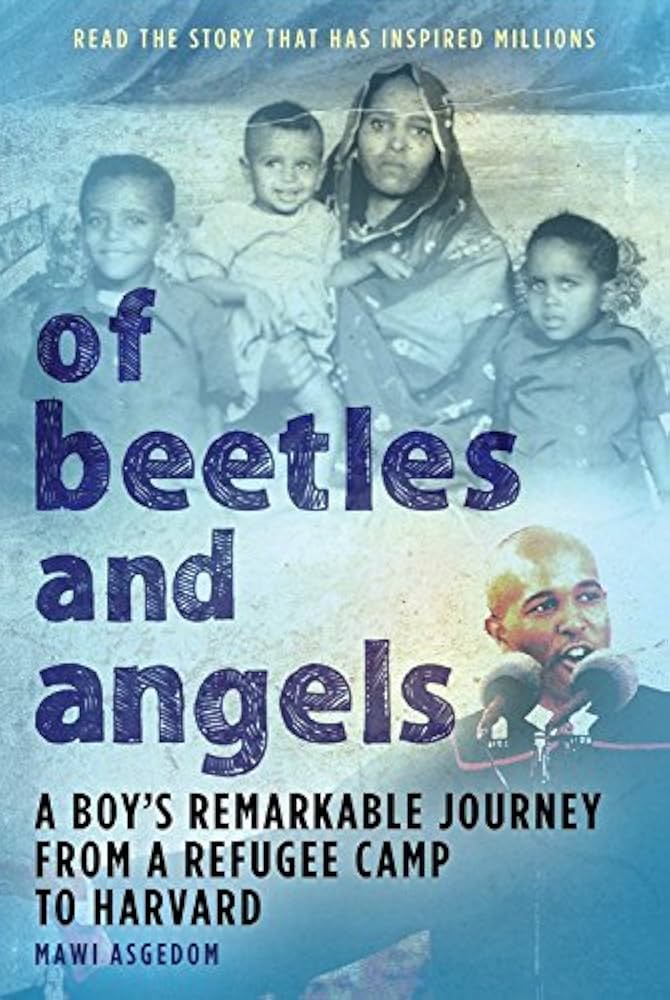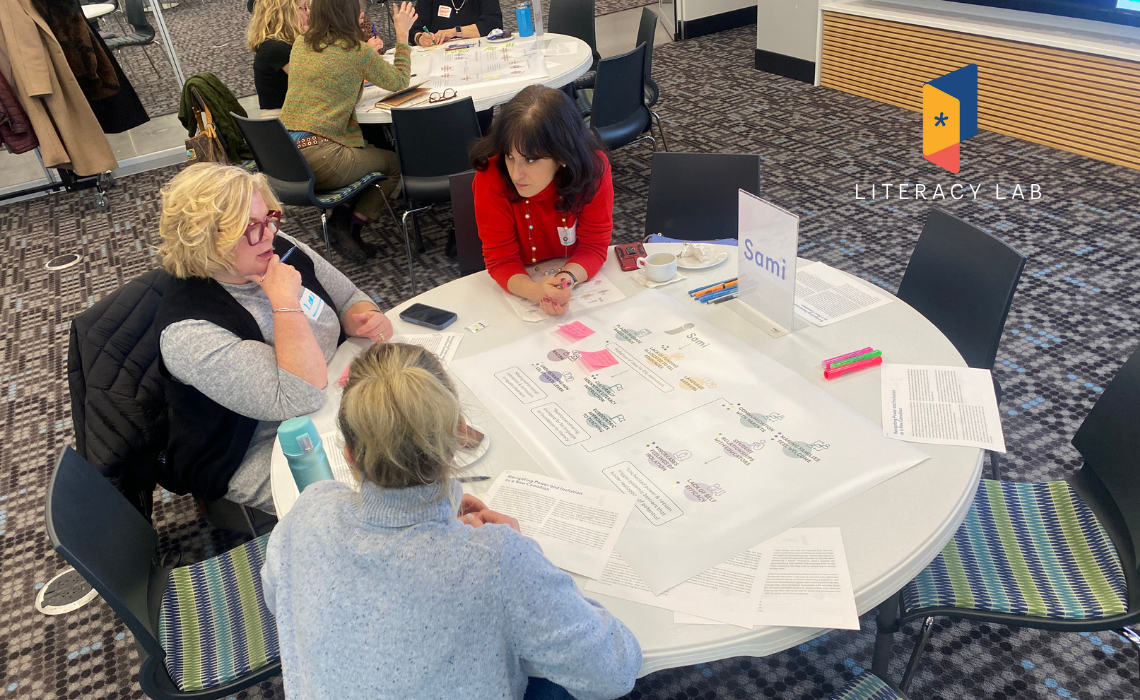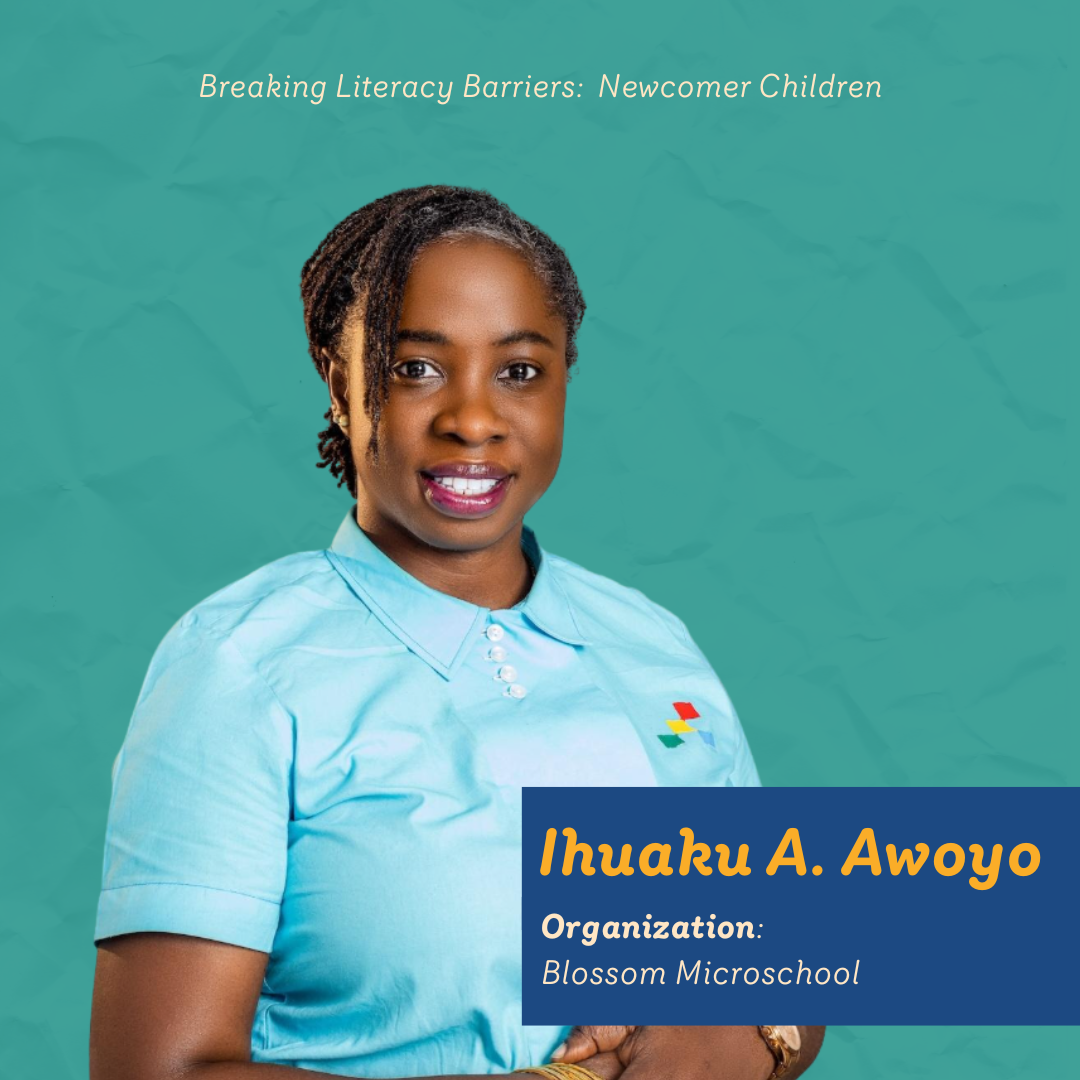Across Alberta, children from underserved communities enter school without the necessary literacy foundation. The Literacy Lab has been working tirelessly to address this challenge, and one of its three focuses is the ‘Power and Inclusion of Newcomer Children.’ In this conversation, we speak with Ihuaku A. Awoyo, a lab member and practitioner with over 6 years of experience working with diverse immigrants.
Understanding the challenge
Newcomer children in Alberta face significant challenges in accessing an inclusive education, especially when it comes to reading instruction. Many schools lack cultural responsiveness, leaving children from diverse backgrounds feeling disconnected from the curriculum. This gap not only affects their academic engagement but also makes it harder for their families to advocate for their needs due to unfamiliarity with the education system. To combat this, one participant suggested the creation of educational nights for newcomer parents based around understanding school in Calgary. These sessions would help caregivers to understand some of the basic processes and activities necessary to support their children in this new context.
Exploring with Ihuaku A. Awoyo
Ihuaku Azuma Awoyo is the founder of Blossom Microschool, an innovative learning space dedicated to helping immigrant children rediscover confidence, curiosity, and joy in learning. With over 6 years of experience working with diverse immigrants, Ihuaku specializes in supporting students who struggle in traditional classrooms by creating personalized, hands-on, and nurturing educational experiences. Her passion for education is rooted in the belief that every child can thrive when given the right environment, encouragement, and tools. Through Blossom Microschool, she continues to bridge academic gaps, build essential life skills, and inspire a lifelong love for learning.
You’ve been engaged with the lab since we began our solutions mapping. How did you end up getting involved, and why did you decide to continue on with the work?
I’m a newcomer with kids–I personally know how difficult it is navigating the school system in a new country. Why I really decided to continue working with the literacy lab was because I saw how passionate people were about creating change and creating solutions. It was something I really wanted to be a part of as I could see myself through the lens of those that will be impacted.
You’re part of the Understanding Schools Session solution prototype. What challenges do you see in this area that made you want to join the solution team?
The “Understanding Schools” sessions are very important to me. Like I said, I’m a newcomer myself. I came to this country six years ago just a few months after Covid hit. Alberta Education was faced with unpreparedness in how to navigate shifting from the classroom to shutting down schools and to moving online. So I thought it was all caused by the pandemic, right? I thought all the confusion came from the pandemic and I understood the scenario at the time. It was very hard to access anything as a new immigrant. Really, really hard. But time has gone by and I still find that immigrants come into this country confused about what to do with school because of that lack or gap of information. I find that parents have to come and are burdened with work and survival, and their children who did well back home come into a developed country and begin to struggle. So I think that birthed Blossom Microschool.
Blossom Microschool was designed for immigrant children who are facing challenges in the educational system. And this exposed me to not just my own experience, but an immigrant's perspective–they find it very difficult to understand what to do when they have challenges because the kinds of communications are different from what we have back home. The school system, the school pathway, is entirely different. This all sounds very simple, but it’s very complicated for a newcomer.
How do you think that the proposed solution we’ve been working on will help? After doing the first iteration of the prototype, what reflections do you have?
I think that the proposed solution is a big need. When you’ve been in the actual problem and you’re part of the solution, it makes you feel like you have your feet in the right direction. I am doing something to impact people that are currently in a position that I was once in.
The proposed solution will help bring confidence to parents and will help parents make informed decisions based on what they’re trying to achieve for their child's education. I would love parents to know that there are options they can take so that they don’t feel like they don’t have choices. For me, this proposed solution is presenting various options to parents and helping them understand the school systems so they can make informed and beneficial decisions.
At the first prototype, I liked the fact that they used a non-English speaking community and were able to go as far as getting a translator who made them feel at home. I felt the impact that day. I felt that the parents, the families, were highly impacted.
There are a lot of children who, by grade three, cannot read confidently or be outspoken because of their reading capacity. And if I do not know anything, I know that life is hard for a child that can’t read.
I am doing something to impact people that are currently in a position that I was once in.
What’s the biggest thing you’ve learned from working with the lab?
My biggest takeaway is knowing that there’s somebody out there thinking about a solution to this problem. Like, you might not get all the answers right. You might not know the right person to contact, but there are people sitting in a space thinking about the large number of people facing this challenge and thinking about how to provide a solution. There’s something working underground for the problem–there’s hope. That’s what I mean. I just see hope. I just see positivity and I see impact in the long run. That’s my biggest takeaway: I see hope for the thousands of immigrants in Calgary, I see hope for children who face reading challenges even if their parents have no knowledge about this lab yet. I believe that these solutions will continue to sprout into something meaningful.
What have you been reading this summer?

Of Beetles and Angels: A Boy’s Remarkable Journey from a Refugee Camp to Harvard by Mawi Asgedom
I see hope for the thousands of immigrants in Calgary, I see hope for children who face reading challenges even if their parents have no knowledge about this lab yet.
The literacy lab is coming to a close! The showcase will mark the end of the lab, but the story is far from over. The literacy ecosystem have been and will continue to work tirelessly to ensure that kids have the support they need to learn how to read.
Literacy Lab



